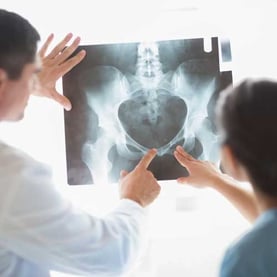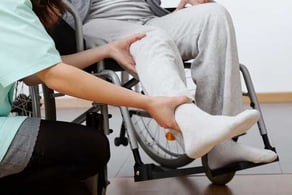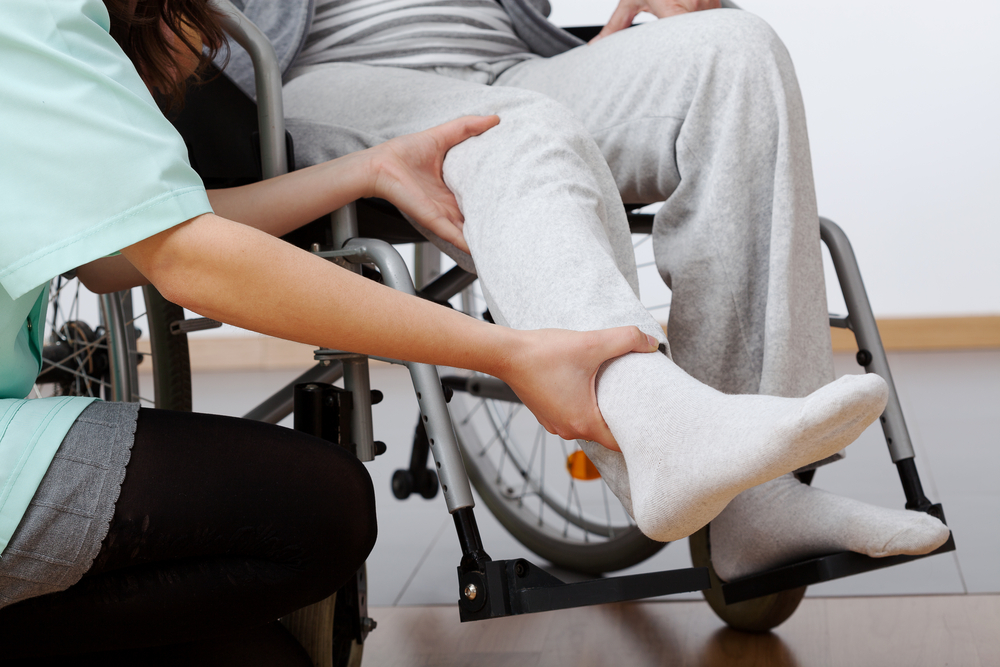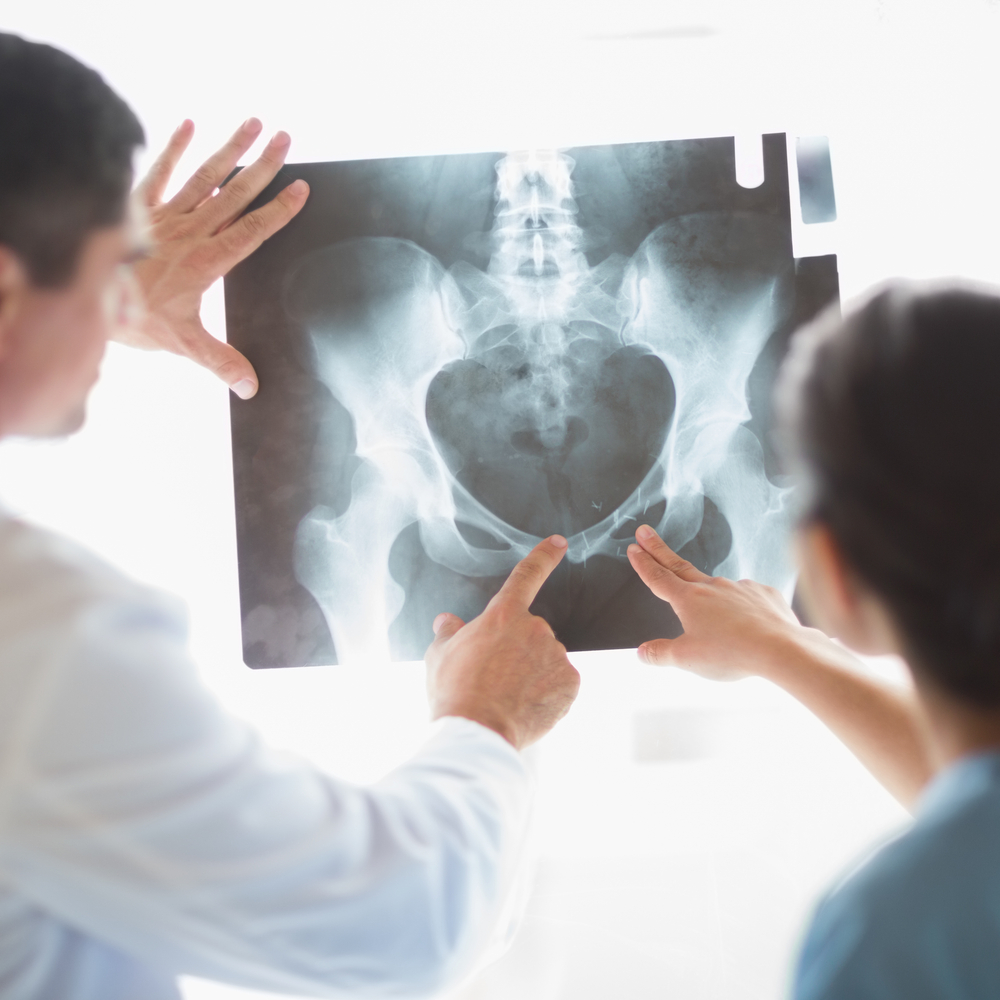The femur is one of the strongest bone in the body and so when it fractures, there is cause for concern. Typically it's as a result of a traumatic injury such as a car accident or fall. The other cause is pathological which is related to a biological process that caused the bone to weaken. Pathological causes include avascular necrosis, bone cancer, or severe osteoporosis. For a more generalized blog for possible causes of hip pain, refer to our hip pain blog.

Types of Fractures
Femur fractures are diagnosed by XRAY and patient history. There are several different types of fractures. The most common are: Transverse Oblique Spiral Comminuted Open The first step in a femur fracture is to have it stabilized and immobilized. There will typically be a period of non-weight baring (NWB) to allow bony union to occur. This is confirmed by follow up films. Your physical therapist will help you with using crutches or a walker. It's important to follow NWB instructions because it can delay healing time as well as pain.

Femur fractures and surgery
Depending on the fracture, you may need surgery to properly fixate the bone. Your orthopedic surgeon is the one that will recommend and perform this surgery. Physical therapy can continue to work with you during this time to assist in transfers, assistive device training, and limiting deconditioning and muscular atrophy as much as possible.
How can physical therapy help femur fractures?
After a femur fracture has healing you may still have pain and secondary effects from being immobilized. Physical therapy will assist in improving mobility (YES! Now we want mobility!!), decreasing tension in and around the hip, and beginning to challenge weight baring. At first walking will seem like enough. We will gradually decrease your assistive device use, practice the stairs and increase balance exercises. Before you realize it, you'll start to be more active and getting back to your regular activities. Again, those alone can be very challenging after a fracture.
Physical therapy for a femur fracture in Columbia and Baltimore, Maryland
Femur fractures rarely occur in isolation. The trauma experienced during your injury most likely caused irritation to the surrounding muscles, tendons and ligaments. Physical therapy can assist with this! If you had a femur fracture and are experiencing hip pain, reach out to our office today!




